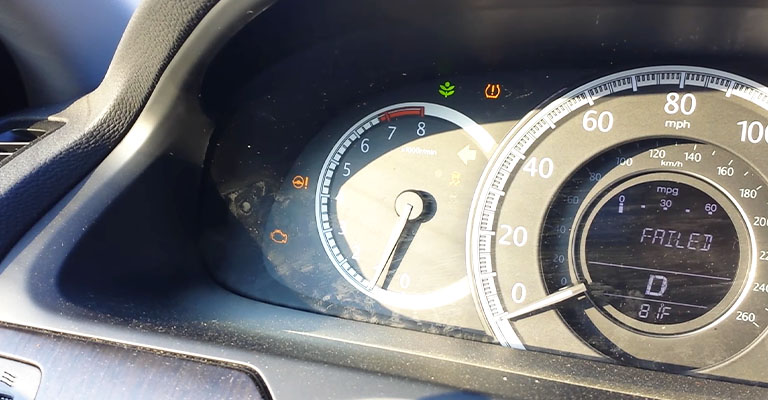Driving is an essential part of modern life, but it also comes with inherent risks. One of the most common and dangerous is rear-end collisions. To combat this, many vehicles are now equipped with Forward Collision Warning (FCW) systems. However, when your FCW system fails, it can leave you vulnerable. In this article, we will delve into the causes of FCW system failures and provide a comprehensive guide on how to fix them.

Image: hondatheotherside.com
What is a Forward Collision Warning (FCW) System?
A FCW system is a safety feature that uses sensors to monitor the distance between your vehicle and the one in front of you. When the system detects a potential collision, it alerts you through visual, audible, or haptic signals, giving you time to react and avoid an accident.
Common Causes of FCW System Failures
There are several factors that can cause a FCW system to fail, including:
- Sensor Malfunction: The sensors responsible for detecting obstacles can become misaligned, dirty, or damaged, leading to faulty readings and system failure.
- Electrical Issues: Electrical problems, such as loose connections, blown fuses, or wiring harness damage, can disrupt the communication between the sensors and the system.
- Faulty Control Module: The control module, which processes data from the sensors and triggers the warning signals, can fail if it becomes faulty or receives incorrect data.
Step-by-Step Guide to Fixing FCW System Failures
1. Safety First:
Park your vehicle in a safe location before attempting any repairs. Turn off the engine and engage the parking brake.
2. Check for Sensor Obstructions:
Inspect the front of your vehicle for any obstructions covering the FCW sensors. Common culprits include dirt, snow, or debris. Clean or remove any obstructions gently.
3. Test the Sensor Alignment:
With the vehicle parked on a flat surface, measure the distance between the sensor(s) and the ground. Ensure it matches the specifications provided in your vehicle’s owner’s manual. If the sensor is misaligned, follow the instructions in the manual for proper alignment.
4. Inspect the Electrical Connections:
Locate the electrical connections for the FCW system, usually near the sensors. Inspect the wires and connectors for any damage or corrosion. Disconnect and reconnect them firmly to ensure a secure connection.
5. Check Fuses and Wiring Harness:
Check the fuse box for any blown fuses related to the FCW system. Replace any blown fuses with new ones of the correct amperage. Also, examine the wiring harness for any signs of damage, such as cuts or abrasions. Repair or replace damaged wiring as needed.
6. Reset the FCW System:
Refer to your vehicle’s owner’s manual for instructions on how to reset the FCW system. This may involve disconnecting the battery for a short period of time.
7. If All Else Fails:
If the above steps do not resolve the issue, it’s likely that the FCW control module is faulty. Contact a certified mechanic or dealership for further diagnosis and replacement of the module if necessary.

Image: autolawnow.com
How To Fix Fcw System Failed
Conclusion
A malfunctioning FCW system poses a direct threat to your safety on the road. By promptly addressing the causes of FCW system failures and following the troubleshooting steps outlined above, you can resolve the issue effectively. Remember, it’s always advisable to consult with a qualified mechanic if the problem persists or if you’re uncomfortable performing repairs yourself. By prioritizing FCW system maintenance and repair, you can enhance your driving experience, promote peace of mind, and reduce the risk of rear-end collisions significantly.